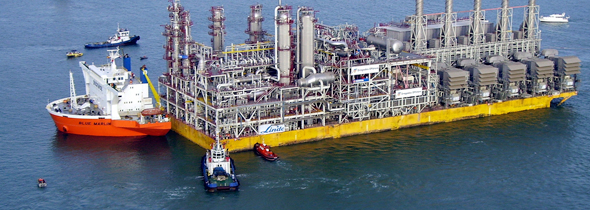In early 2010, spokespeople from the Alaska Pipeline Project announced that they had entered into talks with US regulatory authorities about implementing an open season. The goal was to promote Alaska’s gas resources in the market. Two options surfaced: either construct a 2,737km natural gas pipeline from North Slope (Alaska) to Alberta (Canada) or transport it via gas pipeline to Valdez, Alaska (1,827km), where it would be converted into LNG for the US and foreign markets. If the objective is met, gas transmission from North Slope will begin no later than 2020. In March, it was announced that the open season had received approval, with the hopes of ending it come late July.
The surge of non-conventional gas in the US is mirrored by the construction of new gas pipelines to bring this gas to the market. The magazine Petroleum Economist, in an article from May, counted 16 projects which had surfaced in this regard, with a total length of 9,234km.
The first shipment of LNG will reach the Mexican Manzanillo plant in 2011. It will be operating at full capacity mid-way through 2012. This plant will be supplied by resources from Peru’s Camisea gas fields.

In early June 2010, Peru launched the first gas liquefaction plant (4.4 tonnes/year) in Latin America. The plant forms part of Peru LNG. This company will sell, exclusively, all the gas this plant produces. One of its primary destinations will by Mexico’s Manzanillo terminal. Mexico has had a natural gas deficit for the past several years. This imbalance will only worsen in the upcoming years.
In February, it was announced that the General Sucre project, devised to mine Venezuela’s gas resources by way of an LNG plant, had been postponed. This project involves developing four unassociated gas fields, two of which (Dragón and Patao) were assigned to the local market.
Argentina has signed an agreement with Bolivia which covers an increase in Bolivian gas shipments to the former, thereby discontinuing short-term solutions between them in terms of natural gas. The plant will be supplied by the Margarita gas field and the neighbouring Huacaya field. These fields will come to form the main axis from which Argentina receives its gas supply.
In September, the winner of the competition created to engineer and build Uruguay’s first receiving and regasification terminal was announced. It is scheduled to be built in Montevideo. The project will ultimately supply gas to both the Uruguayan and Argentinean markets, using the Cruz del Sur gas pipeline, which connects the countries’ two networks.


